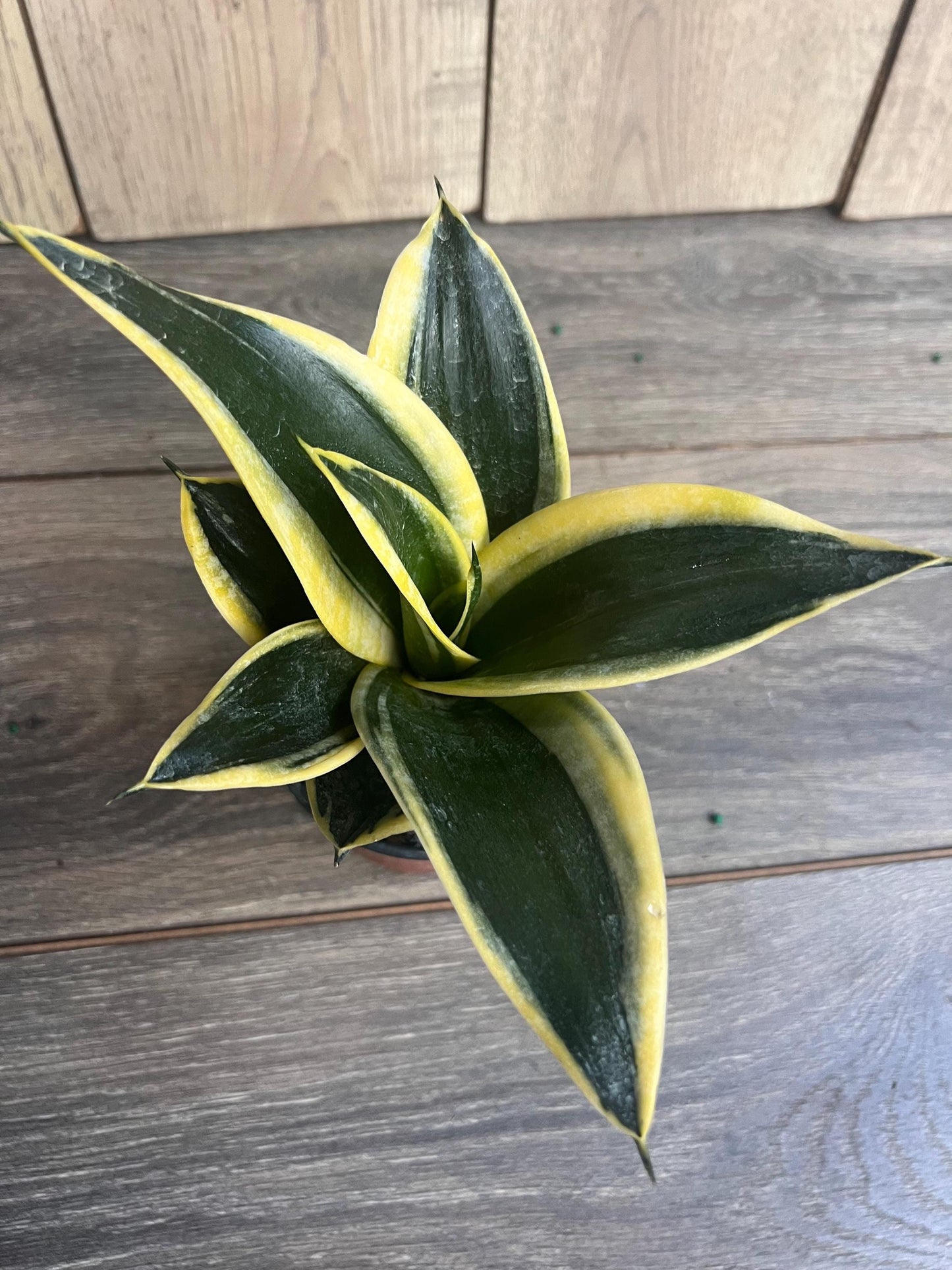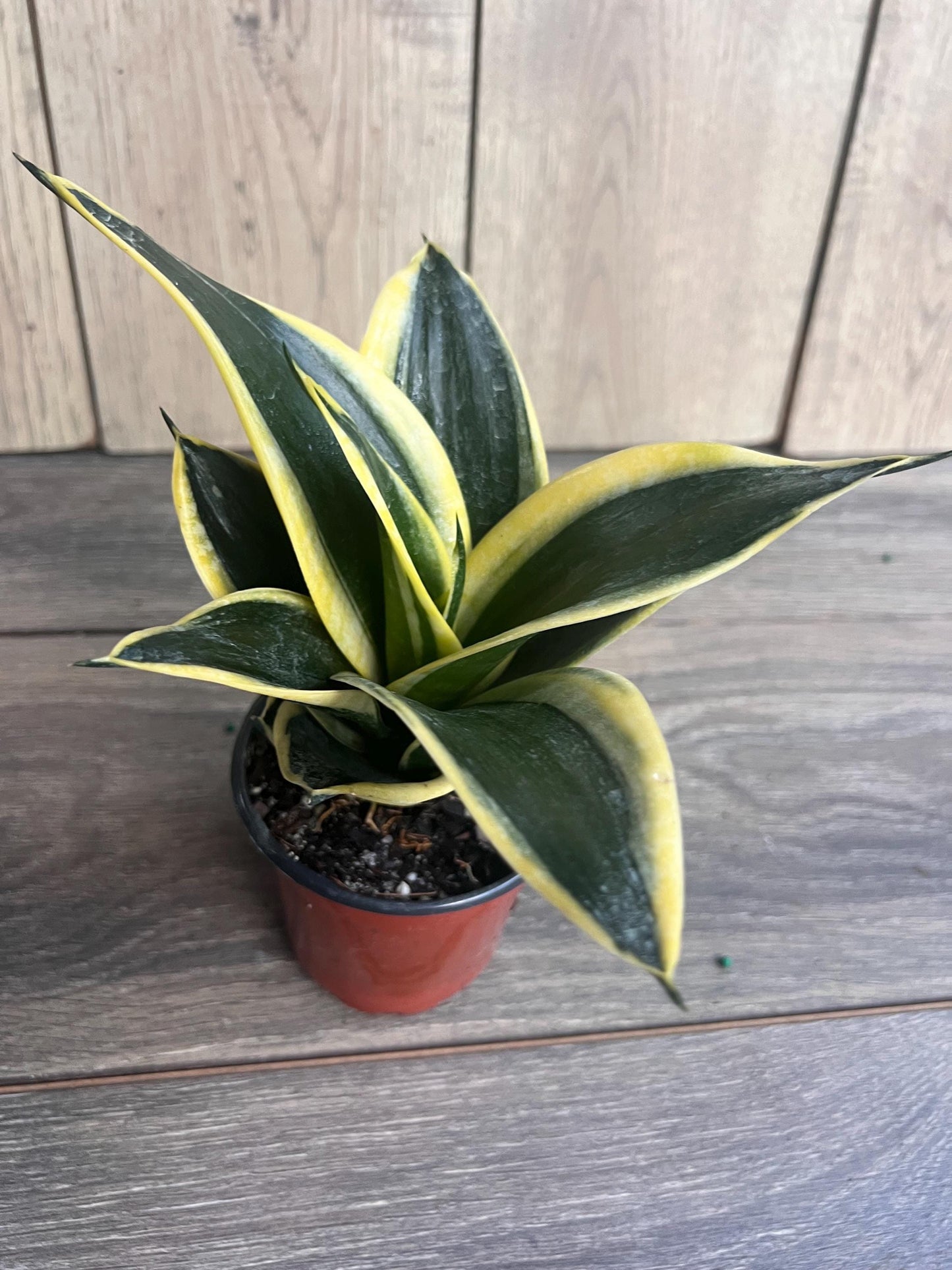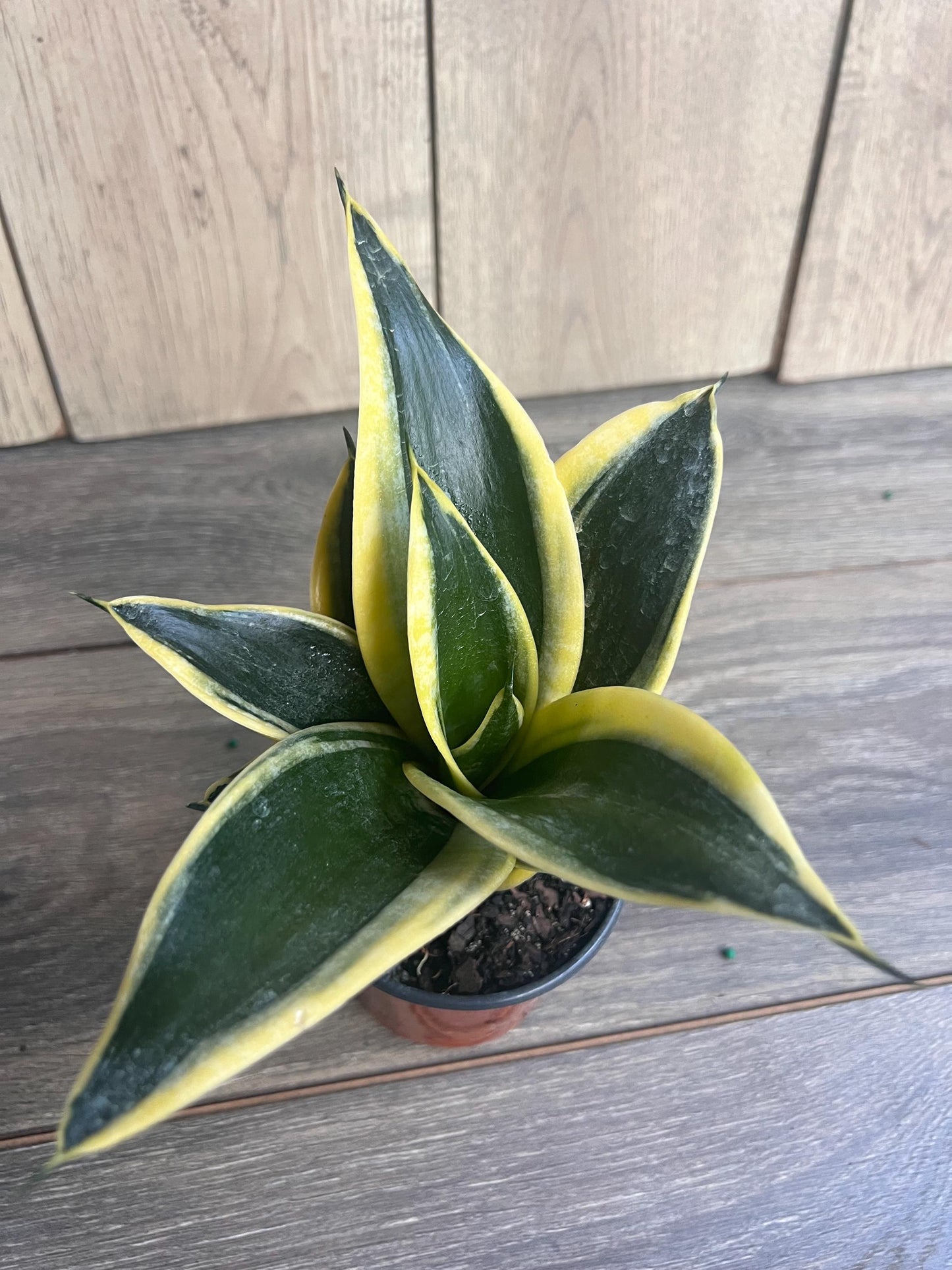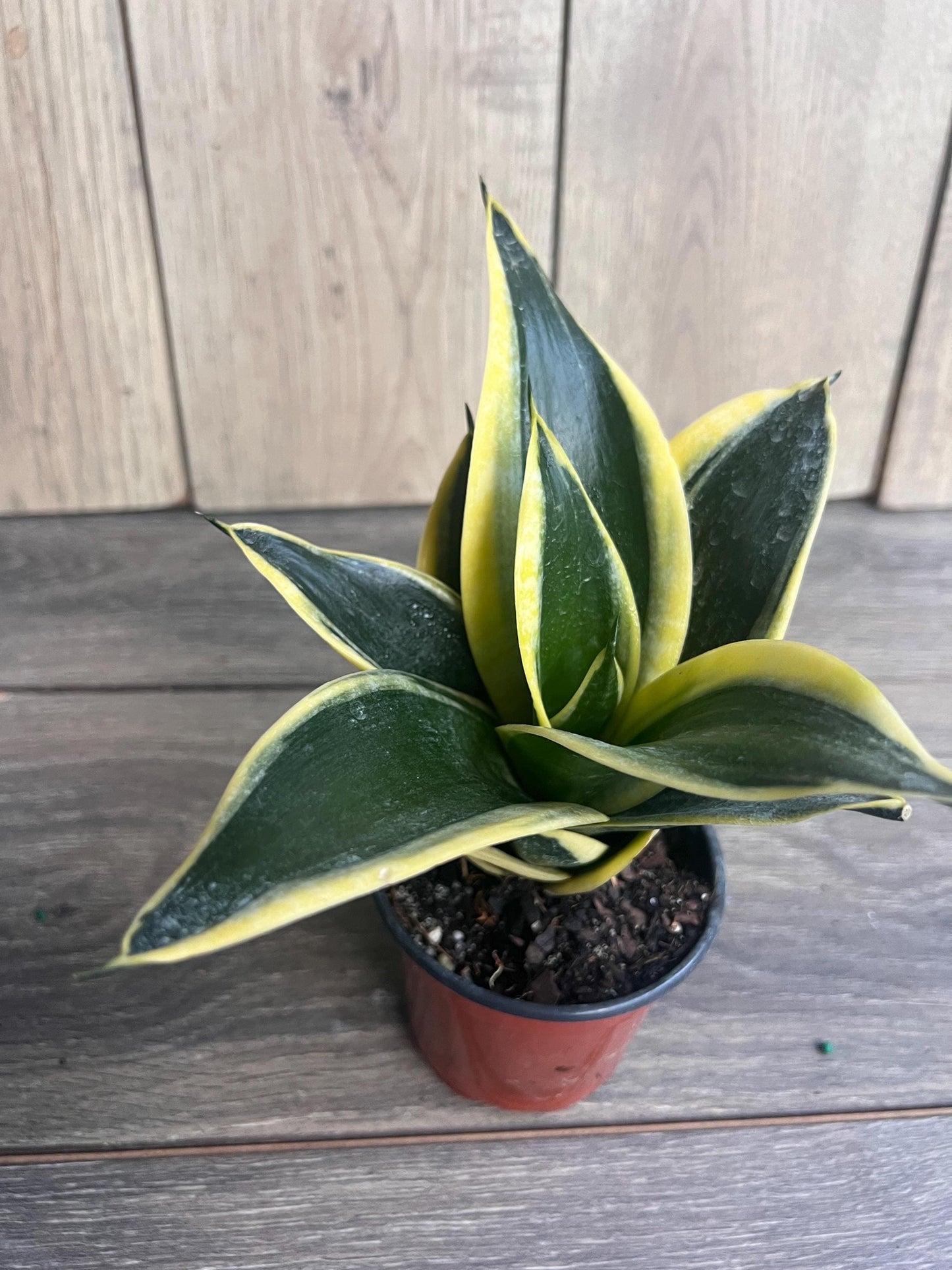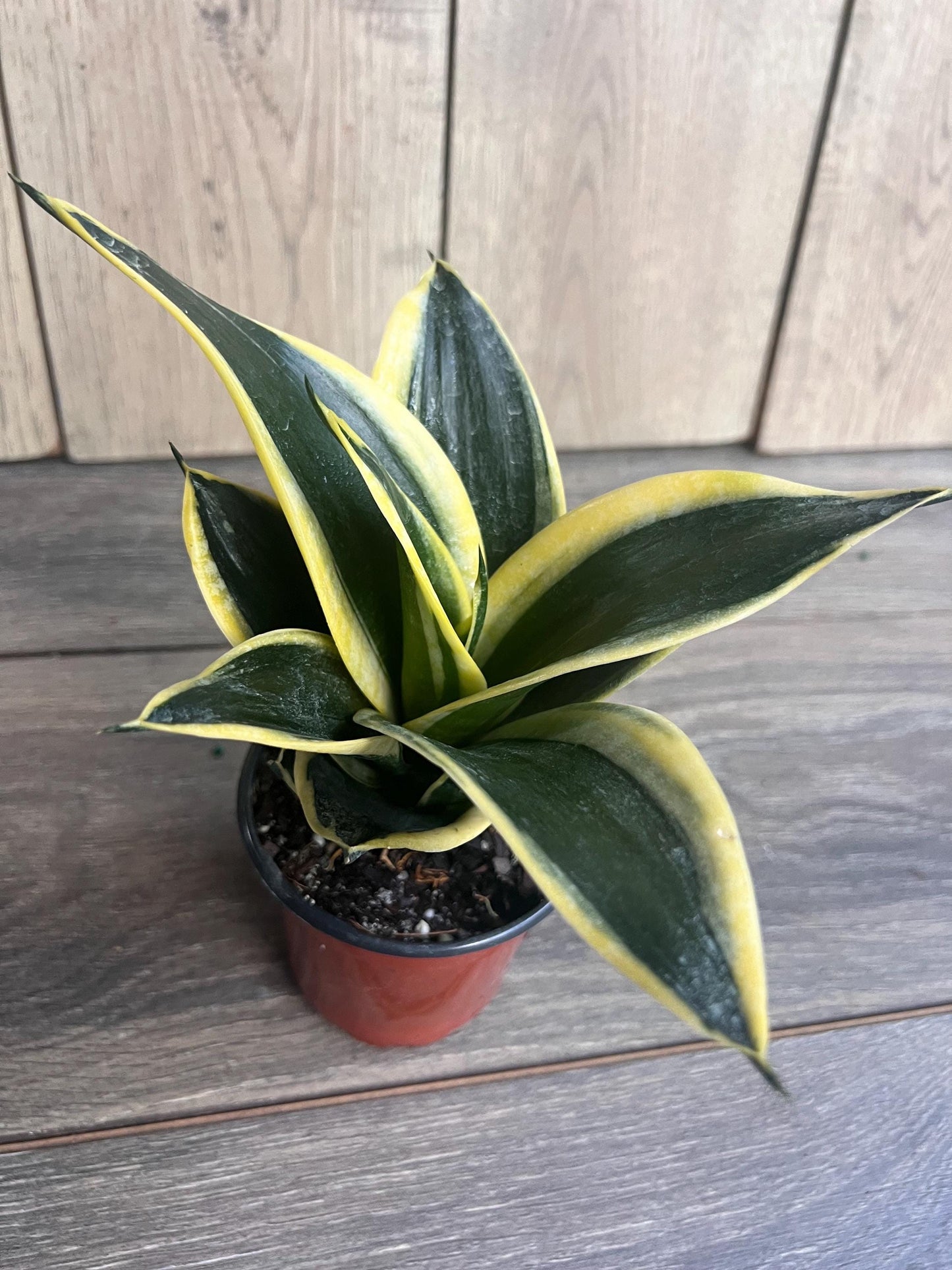Sansevieria Jade Pagoda Hahnii in 4"pot, snake plant
Sansevieria Jade Pagoda Hahnii in 4"pot, snake plant
Couldn't load pickup availability
Note: You will receive Sansevieria Jade Pagoda in 4" Pot similar to the pictures
Sansevieria 'Jade Pagoda Hahnii' is a compact, low-growing variety of Sansevieria that is popular for its attractive, rosette-like form and rich, jade-green foliage. This cultivar is a variation of the Sansevieria trifasciata (commonly known as the snake plant or mother-in-law’s tongue) and features shorter, more upright leaves that form a dense, spiral rosette at the base. The leaves are typically dark green with light green or yellowish stripes, giving them a striking contrast. Due to its smaller size, 'Jade Pagoda Hahnii' is an excellent choice for table tops, shelves, or small spaces. Like other Sansevieria varieties, it is incredibly hardy and tolerant of neglect, making it an ideal plant for beginners or those who need a low-maintenance indoor plant.
Key Care Requirements for Sansevieria 'Jade Pagoda Hahnii':
-
Light:
- Prefers bright, indirect light but can also tolerate low light. It will grow slowly in low light, and the color of the leaves may fade. For the best growth and vibrant color, provide bright, indirect sunlight.
-
Watering:
- Water infrequently, allowing the soil to dry out completely between waterings. Overwatering is one of the most common issues with snake plants, so it’s important to ensure the soil is well-draining and never waterlogged. Typically, watering every 2-3 weeks is sufficient, depending on temperature and humidity.
-
Soil:
- Well-draining soil is essential. A cactus or succulent mix works well, or you can add sand or perlite to regular potting soil to improve drainage. Good drainage prevents root rot, which can be a problem with overwatering.
-
Temperature:
- Prefers warm temperatures, between 60°F to 85°F (16°C to 29°C). It is sensitive to frost, so avoid placing it in areas with cold drafts or temperatures below 50°F (10°C).
-
Humidity:
- Sansevieria 'Jade Pagoda Hahnii' is tolerant of average indoor humidity and doesn’t require high moisture levels. It’s perfectly fine in normal household humidity, but if your environment is particularly dry, you can occasionally mist it or use a humidifier.
-
Fertilizing:
- Fertilize sparingly during the growing season (spring and summer) with a diluted, balanced liquid fertilizer. Avoid fertilizing in the fall and winter when the plant is dormant. Over-fertilizing can cause damage, so it's best to fertilize only once a month during the growing season.
-
Pruning:
- This plant doesn’t require much pruning. Simply remove any dead or damaged leaves to maintain its appearance. You can also prune it to control its size and shape, but keep in mind that its slow growth means it won’t need frequent trimming.
-
Repotting:
- Sansevieria 'Jade Pagoda Hahnii' has a slow growth rate and doesn’t need frequent repotting. Typically, repot it every 2-3 years or when it outgrows its container. Use a pot that’s just slightly larger than the current one, and ensure it has proper drainage.
-
Pests and Diseases:
- This variety is fairly resistant to pests, but it may occasionally be affected by mealybugs, spider mites, or scale. Inspect the leaves for any signs of pests and treat with insecticidal soap or rubbing alcohol. Root rot is the most common issue, usually caused by overwatering.
-
Propagation:
- Sansevieria 'Jade Pagoda Hahnii' can be propagated by leaf cuttings or by dividing the rhizomes. For leaf cutting propagation, cut a healthy leaf into sections (about 3-4 inches long), let them dry for a day or two, and plant them in well-draining soil. Keep the cuttings in a warm, bright location until they root.
Share
